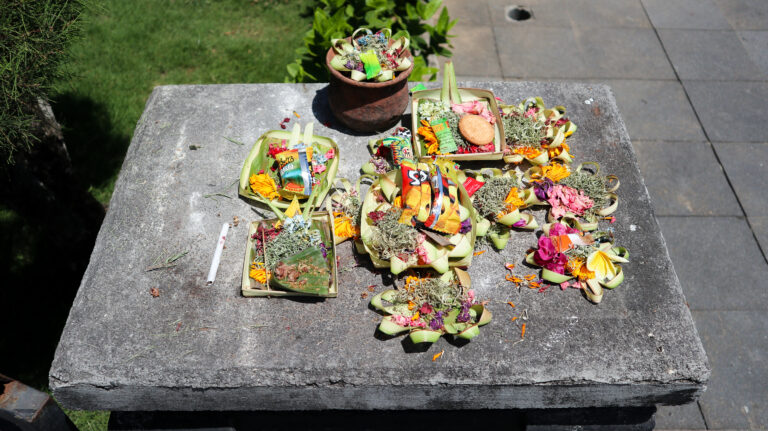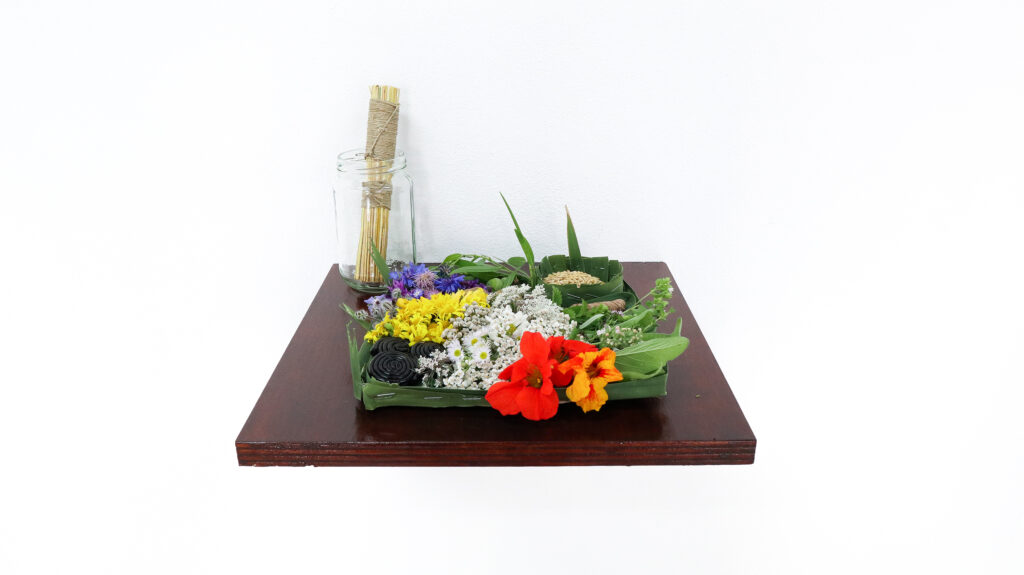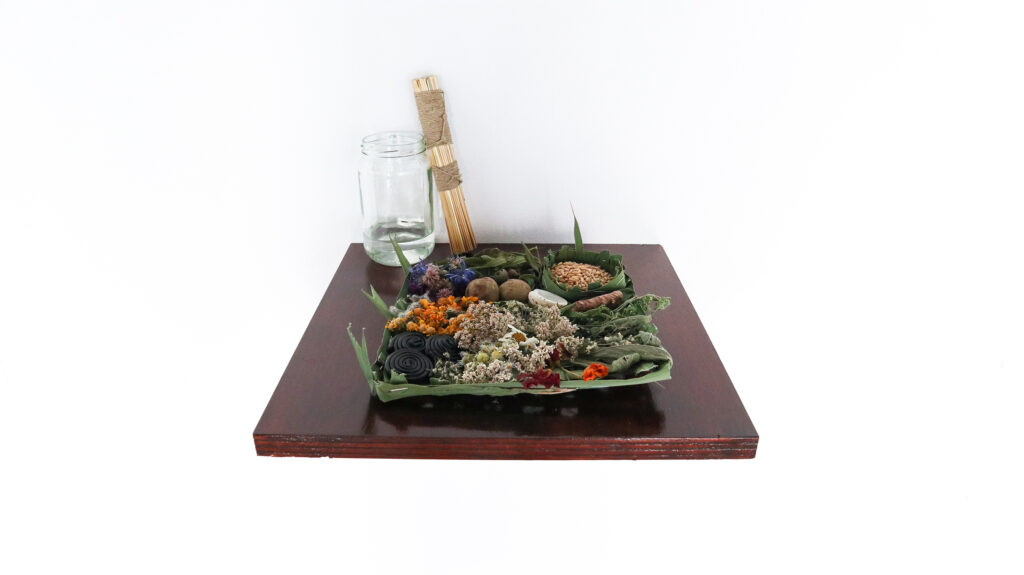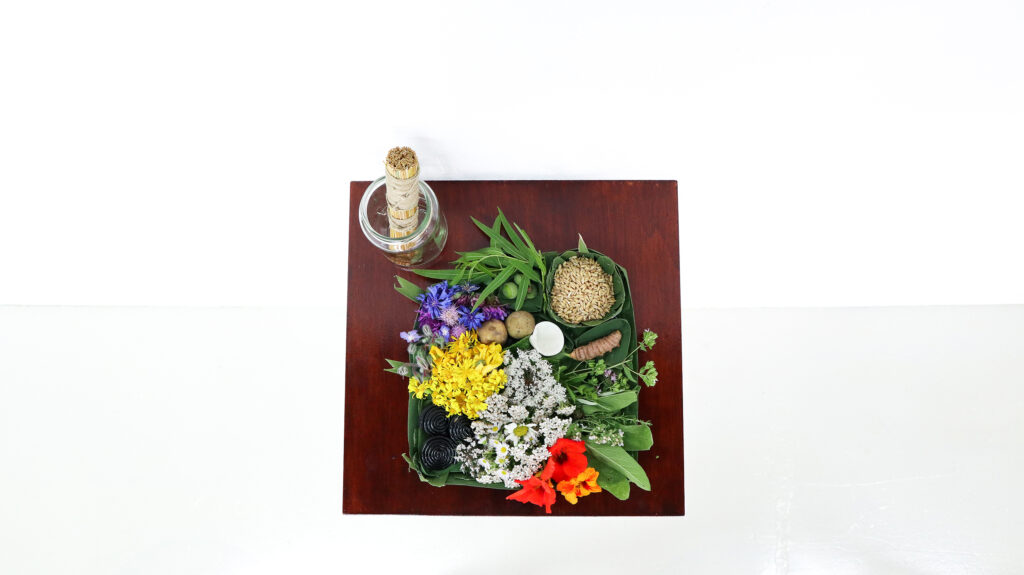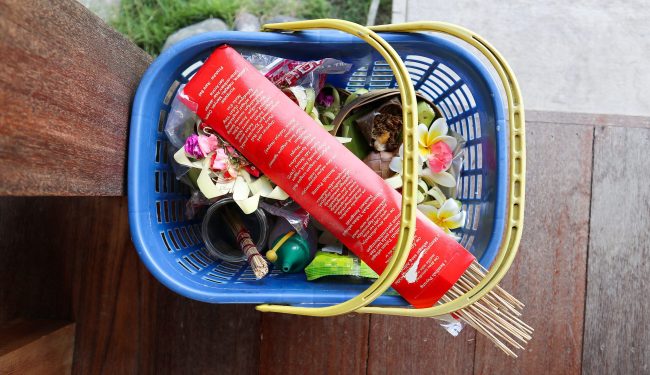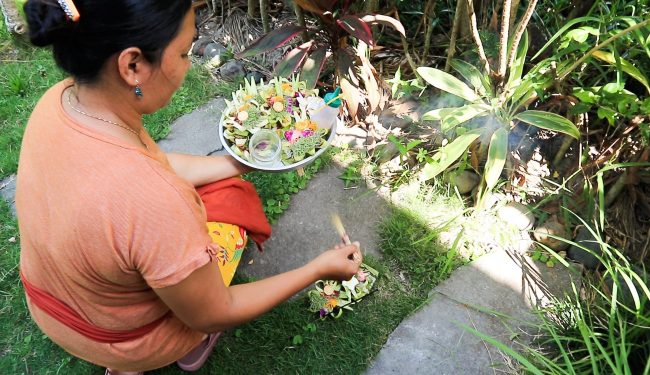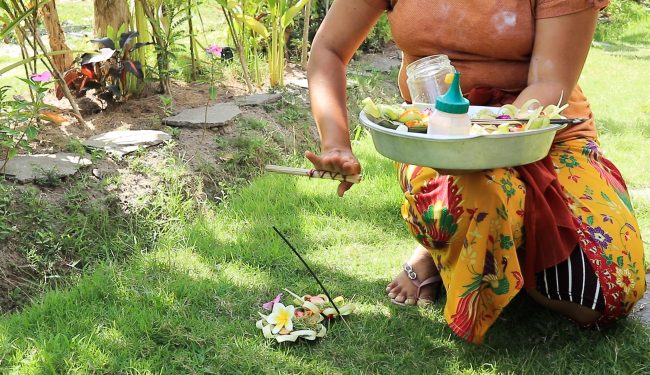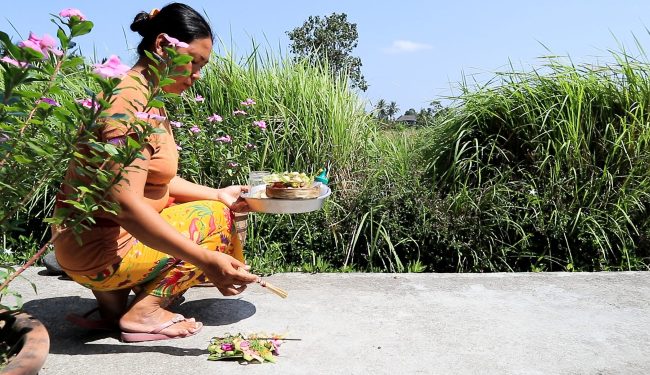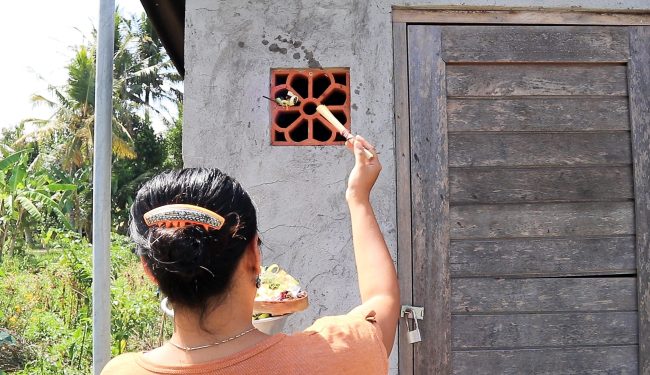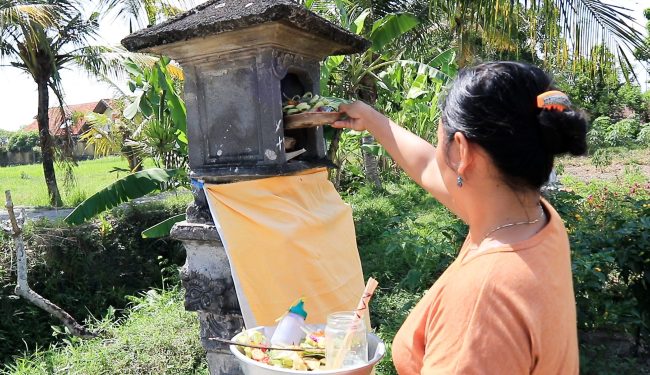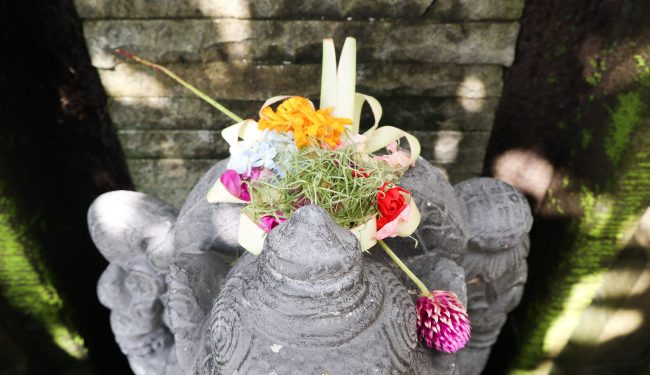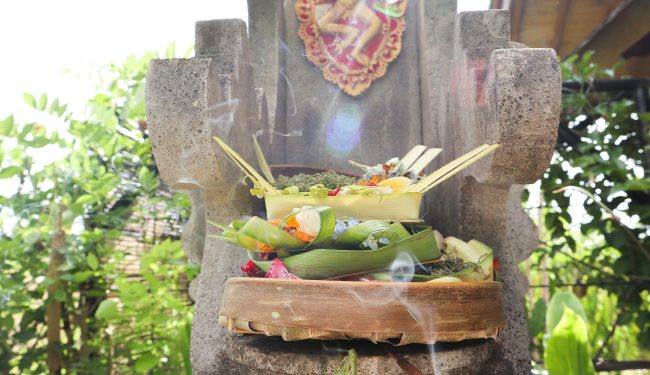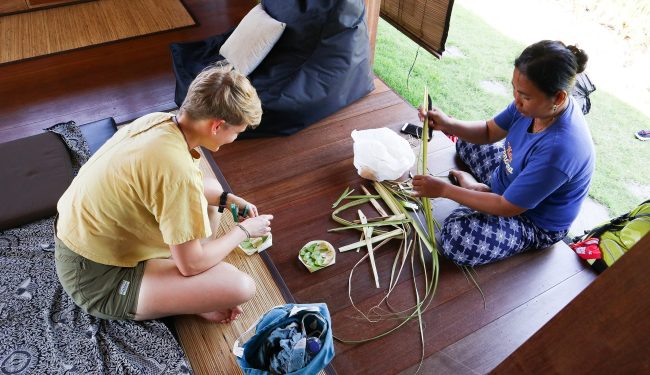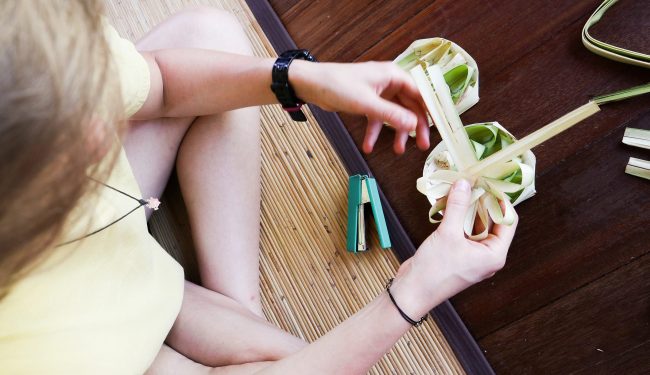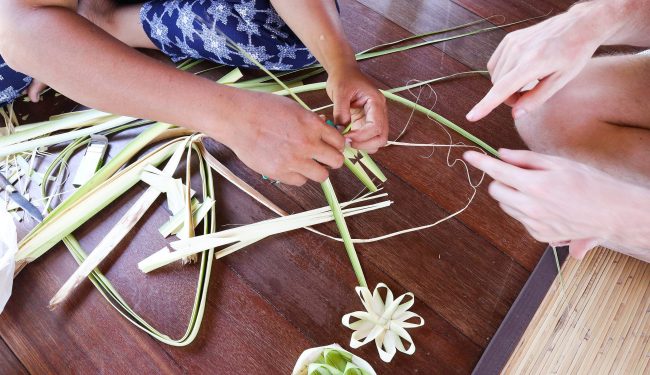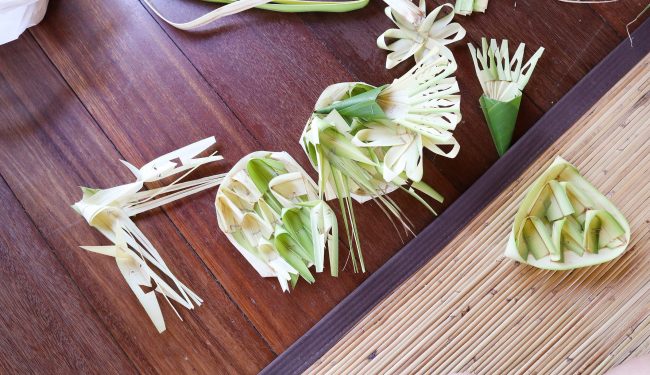Canang Sari
locally collected plants, typha leaves, willow tree leafs, flowers, acorns, liquorice, oat, frangipani scent, seashell, turmeric, potato, herbs, 2020
During my time in Bali [Indonesia] I encountered many daily offerings locally known as “Canang Sari”. This practice of giving thanks stems from a local combination of beliefs such as a distinct form of Hindu worship, animism, ancestor worship and reverence for Buddhist. The “Canang Sari” can be made for all kinds of reasons and occasions. Traditionally a little basket generally consisting of banana & coconut leaves is handmade everyday and holds the offering. The often colourful and lively looking offerings may be found at home or in the immediate vicinity to your house. At work or in the main street. At the front door or in the garden. They are placed and prayers spoken in order to please the gods and bring luck & good fortune for people, other living beings, this specific location and its energy.
In its current iteration local plants, candy & other natural objects are brought together with several traditional aspects in order to find a balanced mix between the present western culture and the offerings eastern origin. By combining our own environment with the experiences and the mindset encountered in Indonesia, Canang Sari intends to instill similar gratitude and respect towards our surrounding world. To inspire a different approach and connection with nature in both a physical and spiritual sense.
The most recent offering presented at TAC Eindhoven is a personal take on what a Canang Sari may bring to a social event such as this exhibition and wishes well upon all present artists, visitors and the space.
Canang sari (ᬘᬦᬂᬲᬭᬶ) – daily offering
Canang – palm leaf basket
kawi (old javanese) language – ca (beautiful) nang (purpose)
Sari (balinese word) – essence
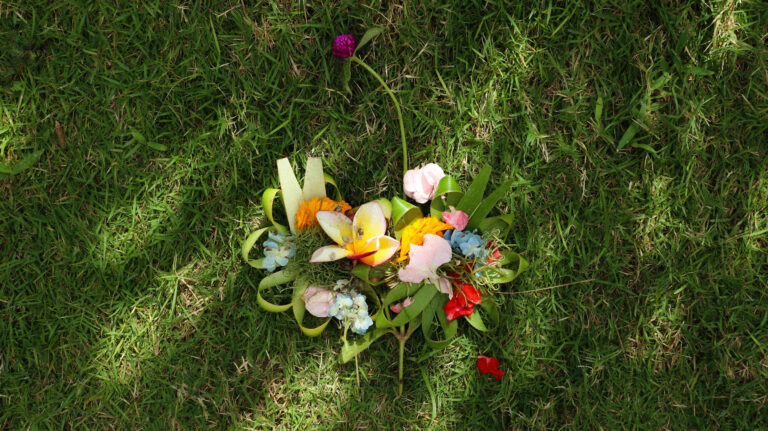
The above offering is meant for the garden and contains several types of flowers. A general rule is that all flowers may be chosen for offerings to gods, goddesses & the sun. However there are also more specific uses for certain ingredients, for instance the red hibiscus is said to represent the shape of the Goddess Kali’s tongue and its colour shows her fierceness. The flower Marigold is Ganesha’s favourite and the colours yellow & white are special to the god Shiwa. The main green component is pandan leaves which have a distinct scent and are offered especially to Vishu. Through the choices in flowers & other ingredients the Canang Sari may appeal to different entities and aspects of life and increase the likelihood of successfully conveying the desired message.
